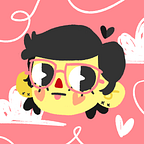Estante em Dia
Amid the great challenge faced by the world in the year of 2020, people were faced with the need to adapt customs, relationships and consumption to a new reality. Providing traditionally face-to-face activities in a remote model emerged as a latent demand from a population within their homes.
This project was created as a case study for the UX Design Bootcamp by How Bootcamps, based on the question: “How to enable activities traditionally in person remotely?”
We used the Double Diamond process as the main tool to guide us throughout the process:
The team responsible for the project was formed by 3 designers, one animator and one software developer, respectively:
- Anna Carolina Tapigliani
- Bia Julian
- Diego Monge
- Dimitri Biko
- Halú de Cássia
Immersion
At this stage we seek to better understand the context of the project and what are the real problems faced by people. For that we based on several types of research and methods, they were:
- Matriz CSD (“CAD Matrix”) — list of certainties, assumptions and doubts in a continuous and changeable way
- Interview data — mapping objectives, questions and additional information
- Quantitative surveys — questionnaires sent via Google Forms
- Qualitative research — interviews conducted through scheduled video and audio calls
- Desk research — search for relevant data to the treated subject
- Card Sorting — compilation and categorization of collected data
Definition
This phase is described as “converging and organizing the collected information and defining the problem to be solved”. The tools used were:
- Insights (with team voting)
- Personas (#HeavyUser and #LightUser)
- Job Stories
- Lean Canvas
All of these processes were fundamental for us to align the team in the direction of the project, to consistently contextualize the universe that involves the user and thus focus on the right issues to be worked on.
Ideation
Based on the data generated and clear direction, the ideation phase begins with the purpose of generating possible solutions to the problem in question. To assist us in this process, we used the following tools:
- User Journey
- Heuristic Analysis (following the Abby Covert method)
- Crazy 8’s — in two rounds
- MoSCoW
- Moodboard
Prototyping
After exploring ideas and refining what should or should not be considered to create our MVP, we begin the prototyping phase.
In it we map the user flow to define the necessary steps for each action and determine the consequences of each decision. We also set up the MVP wireframe in order to facilitate the layout of the elements and components of the interface, making the flow clearer and easier when structuring the high-fidelity prototype.
Several tools were used, such as:
- User Flow
- Wireframing
- High fidelity prototype
- Usability test
- Metrics
The UI colors were chosen because of their symbolism. Green means peace, relaxation and growth; Blue represents calmness and comfort. The combination of those colors creates a comforting environment, that could encourage the user’s reading habit.
Thank you! Estante em Dia was a big case study, and a great opportunity to develop new abilities in both UX and UI Design. I hope you enjoyed reading it!
I’m Bia Julian.
